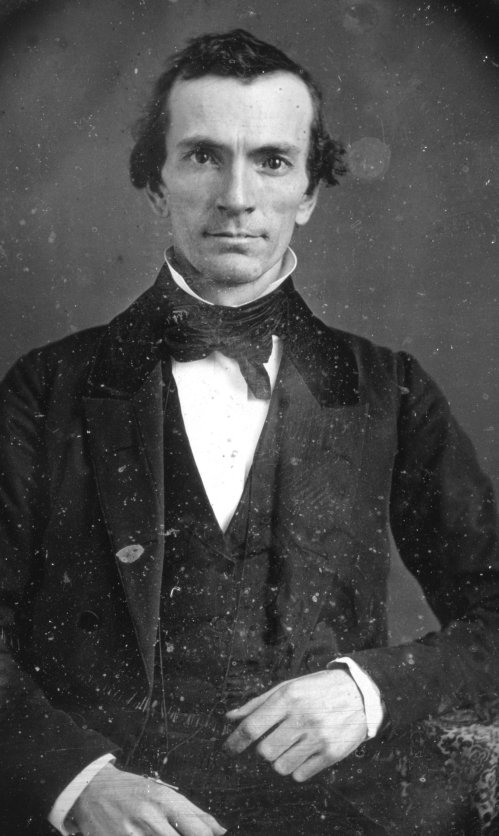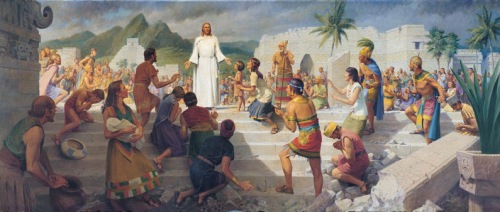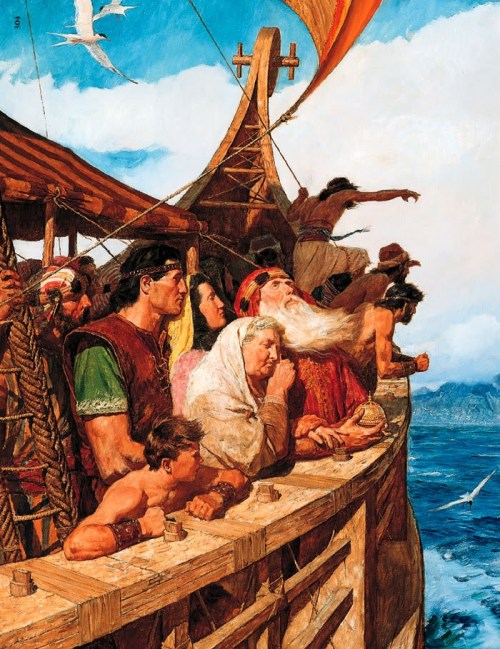The Republican Party has changed considerably in my lifetime. When I was a kid, my impression was that conservatives dressed conservatively, were well groomed, well behaved, spoke intelligently, and valued principles. I never expected to see a vulgar reality TV star like the Duck Commander, Phil Robertson, delivering folksy speeches at conservative political events in a full beard and camouflage. But they’ve had more than just a cosmetic makeover, with the infusion of the Tea party the GOP has undergone dramatic ideological and epistemological changes. Their positions may have remained more or less the same, but what is noticeable is how much their principles have changed in order to remain static. For instance, the party defended the federal Defense of Marriage Act while simultaneously championing “states’ rights” to regulate marriage, so long as the end result was a ban on same-sex marriage. Republicans also criticize the Obama administration for dereliction of duty in not defending DOMA at the Supreme Court, but were then silent when Governor Scott Walker refused to defend Wisconsin’s domestic partnership registry in court. This ends-justified mentality seems closer to what I’ve observed in cults, and in many ways I would argue that’s exactly what the Republican Party is becoming.
Cults love to catch people off guard with new information, this is the signature tactic of a successful cult. It’s precisely why Mormons and Jehovah’s Witnesses still go door to door, as prepared speakers trying to catch unprepared people in their homes, or why Scientologists try to catch passersby in a public park to offer a “free stress test.” It doesn’t even matter if the information they offer is true or not, the fact that the listener is unfamiliar with it gives the cultmember illusory superiority. The advantage is that the cultmember doesn’t actually have to be more knowledgeable on a subject, they just have to have knowledge of something that the other person doesn’t. It matters little how much a Christian knows about the Bible, if they don’t know anything about the Book of Mormon then that’s a weakness the Mormon missionaries will focus on. Zealous Christians trying to convert the missionaries would have to know more about the Book of Mormon than the Mormons to have any hope of succeeding.
It doesn’t stop with converts, either. Secret doctrines are the stock in trade of cults, and even the initiated are incrementally bombarded with previously hidden information as a means to keep them advancing further, like when Scientologists reach level OT III and are finally shown L. Ron Hubbard’s sci-fi creation myth. The distinction between a religion and a cult can sometimes seem arbitrary, but students of religion can easily recognize a cult when they reach the limit of information that can be acquired as an outsider. You can learn everything about Judaism, Christianity, Islam, Hinduism, Buddhism, etc. without having to convert to those religions, but you can’t learn everything about Mormonism or Scientology without being a member (although the internet is changing that). Even then, the selective information that is taught on the inside differs from the total information available on the outside. Cultmembers characteristically operate with a different set of “facts” than nonmembers. A conflict between the cult’s “facts” and reality are dismissed as a conspiracy by their organization’s perceived enemies–which can literally include anything outside the cult.
The most frustrating part of debating with today’s Republicans is having to be on top of all the latest conservative conspiracy theories. It can be difficult to discuss any political topic with a Republican because they frame most subjects with assumptions that aren’t based in fact. Claiming Obama is a Kenyan, Muslim, or socialist can derail any serious talk about the President or his politics. And just like with a cult, it doesn’t matter how knowledgable an outsider is on factual information, because the Republicans are more knowledgable on false information. Though they might really not know anything about economics or ecology, they’ll consider an opponent ignorant if he’s unfamiliar with Cloward-Piven, Agenda 21, Saul Alinsky, or climate change denial. The secret doctrines of conspiracy theories have become the norm for the GOP as it has become more and more cultic, to the extent that members might not even be aware of how pervasive they are. Even conspiracies that originated on the Left, like 9/11 truthers and birthers, have found their forever home in the GOP. As with cults, their more extreme beliefs tend to be omitted from content accessible to the general public, aside from strategically positioned dog whistles. Nevertheless, although not all Latter-day Saints are initiated in the temple rituals, all Mormons must accept that all of Christianity is a Satanic conspiracy against the one true church and the Bible, not just a theological disagreement. Similarly, issues that are in reality just disagreements on politics are interpreted by Republicans to be conspiracies of gays, atheists, or liberals to intentionally destroy marriage, the church, or America. Republicans seem determined to steer the political conversation towards outlandish claims which inhibit rational political debate. Rightwing positions on meteorology, sexual orientation, evolution, and U.S. history actually require a conspiracy of elitist academics and liberal media to explain why the overwhelming majority disagree with them. As with religious cults, if there is a real conspiracy it is to be found inside the party.
Cult doctrines are notoriously difficult to rebut because they tend to be circular and interdependent on each other. The Book of Mormon being true depends entirely on Joseph Smith being a true prophet, and faith in the LDS church as the only true church rests on belief in the Book of Mormon. It’s simple enough to logically articulate why it’s wrong, yet trying to short circuit this reasoning in the Mormon mind can be an insurmountable challenge. Although their worldview is really a fragile house of cards that should be able to topple with the removal of one or two fundamentals, their belief systems can be so convoluted that they actually forget when information has been refuted and still rely on that false information as the basis for other beliefs. Similarly, it can be difficult to unravel rightwing doctrines. Even when Republicans admit that birtherism is a fraud, it doesn’t seem to shake their underlying belief that President Obama is somehow ineligible to be in office; at its worst, birtherism was never more than a pretext for a preconceived prejudice. Trickle down economics doesn’t work yet Republicans still blindly push it because it supports their tax policy. Failure to find WMD’s in Iraq hasn’t diminished their faith in the justification of the Iraq war. Half of Republicans still believe they were found, and Republicans have shown to be more confident in this erroneous belief after being told correctly, like a Mormon “testifying” that the Book of Mormon is true when confronted with evidence to the contrary. On top of that, cultmembers are trained to distrust sources critical of their religion, and the Republican Party’s distrust of the so-called “liberal media” has only worsened with the rise of blatantly biased conservative outlets and forwarded emails beneath the radar of fact checkers and peer review. In a sea of conservative misinformation, too many Republicans are helpless to discern truth.
Cultmembers generally resent the allegation that their organization is a cult. Republicans reading this are probably thinking the same thing right now. While it’s understandable that nobody likes the stigma associated with the term “cult”, cultmembers are often more concerned with perception than with actually being less cultic. Cults tend to have several predictable responses to this accusation, none of which involve being less controlling or open to facts. The first strategy is to argue that if their group is a cult, then every other religion must be a cult too. This false equivalency projects the cult’s own secretive, conspiracist, and controlling qualities onto religions that are demonstrably dissimilar. And while theology, like politics, can be unproven hypotheticals, factual disagreements, such as the origin of your sacred text, are verifiable. Likewise, politicians on both sides will have differing opinions on the possible outcome of a policy, but currently only the Republicans want to have their own facts. In the end, “both sides do it” is a weak defense for a religion or party that considers itself exceptional compared to its competitors.
The second strategy to deflect the cult label is to argue against a stereotype of a cult, a uniformed commune of groupthinkers. But the truth is, most cults aren’t isolated communities of identical people who all dress alike and think exactly the same, yet they’re nevertheless cultic. Their membership may be from all walks of life and diverse on a spectrum of ideology and loyalty to the organization: some beginners, some moderates, some extremists. Structurally, however, the organization is still a cult, and they just exploit the demographics of their membership to make people think otherwise. The Mormon church goes to great lengths to station minorities in visible missions, both as an attempt to dispel the effects of generations of racial segregation, but also to make themselves appear less homogenous. Their “I’m a Mormon” advertising campaign was trying too hard to fight the stereotypical image Mormons themselves had created. The GOP has been just as obvious lately in trying to push minorities, women, and young people in front of the cameras, despite its older, whiter, and manlier base pushing them out of the party. But it’s one thing to make a woman the face of your organization when she’s just volunteering at the front desk of the temple visitor center, it’s another to make an unqualified person your vice presidential candidate because she’s a woman. Both are undeniably deliberate and shamefully desperate, but at least they’re only superficial.
The way cults exploit individualism and ideological variances is far more troubling. No matter how brainwashed people are, they still can’t be programmed to think and act exactly the same all of the time. Unlike normal religions, members of cults pass through different phases, a fake diversity that the organization will often use to give the illusion of personal variety even if the end goal is to eliminate those differences. The Church of Scientology perfected the technique of separating novices from the advanced, which helps put a more friendly, relatable face to the general public while isolating the brainwashed zombies. Full disclosure can be a catch-22, somebody unprepared to receive a ridiculous doctrine could easily be turned off to the organization with that information. From my own personal experience, the GOP’s fringe tends to be more guarded about its conspiracy theories when interacting with moderate Republicans than with me. They don’t expose sympathizers to questionable information that could potentially alienate them, but they don’t mind wasting their enemy’s time with those arguments. Those at the lower level can also serve as a distraction from the more extreme initiates, providing a moderate voice to attack their critics while never criticizing the organization itself. Although cults strive for complete assimilation, they can also use a member’s individuality for self-serving marketing. Scientology wrote the book on this strategy by intentionally seeking out charismatic and eccentric celebrities as brand ambassadors. The Republican Party has taken this to the next level, recruiting the Duck Dynasty cast in full costume, turning politicians into cable news pundits and infomercial hosts, and making candidates and reality TV stars interchangeable. It’s not just the striking absence of this hucksterism in the Democratic Party, it’s that the Republican Party seems to have no problem being the agency for stardom in the same way that the Church of Scientology has been for aspiring actors.
It’s no secret that the Republican Party has become more conservative in the last 15 years. Ideological purity has pressured members to take gradually more extreme positions, to the extent that even revered Republicans like Ronald Reagan probably wouldn’t be conservative enough to survive in today’s party. Every four years the GOP goes through a succession crisis comparable to the Mormons after the death of Joseph Smith, and it will only keep getting worse as they keep losing. In Republican campaigns, every election seems to be the end of the world. That’s not really hyperbole, they literally believe that. Democratic candidates may also believe it would be disastrous if they lost (they’re usually right), but they’re not literally apocalyptic about it. The Republican Party actually mobilizes their base to vote by speculating that their opponents may literally be the eschatological Antichrist. But this isn’t just exploiting evangelical’s beliefs, because this eschatology has been hijacked to become something that’s no longer distinctly Christian but rather distinctly Republican. For example, it didn’t matter that Mitt Romney was a Mormon of polygamous descent, who created the precursor to the Affordable Care Act in a state with legal same-sex marriage. Billy Graham considered him the only candidate standing up for Biblical values, even though it’s only due to political expedience that Mormons today no longer practice polygamy, and only coincidence that Mormons oppose homosexuality (Mormons only believe this because it’s what their current prophet says, not because of anything in the Bible; their prophet could change this at any time). Somehow a Mormon candidate couldn’t be the Antichrist just because he’s a Republican. Every election cycle, the alarmist GOP positions themselves as the only hope between mankind and doomsday. Their repeated failed predictions don’t seem to have eroded faith in the party any more than the Watchtower’s multiple failed Second Comings. Cults often fatalistically condition their followers to self-destruct if they lose faith, making them think that if the cult’s teachings are untrue, then no religion can be true either. Similarly, Republicans seem to be conditioned to abandon hope in politics or the country if their party can’t get their way.
There is no easy solution, without a fundamental demographic upset I think we may be past the tipping point. For the Mormon church to stop being cultic would mean to stop being Mormon, and I think this may be true of what the Republican Party has become. Too many definitive Republican positions are based on arguments which are verifiably false, to abandon those arguments would be to entertain the possibility of different conclusions. The Republican Party has shown their willingness to change their principles to continue holding to a pre-determined conclusion, not the other way around as they need to do.



